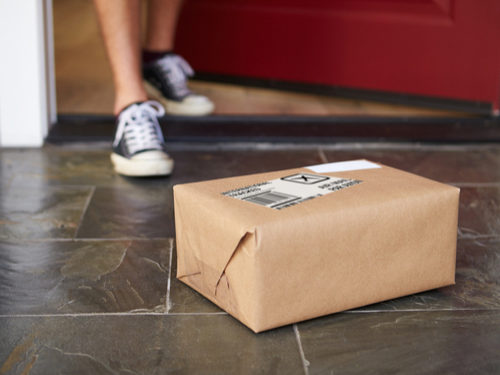
Home » 'Forever Faster': How Puma's Newest DC Puffs Up Service Levels
Case Study
'Forever Faster': How Puma's Newest DC Puffs Up Service Levels

August 2, 2019
As e-commerce orders grow, legacy distribution centers might not be able to keep up. A completely new facility with the latest in automation might be necessary.
In 2018, Puma, one of the world’s leading sports footwear, apparel and accessories brands, decided to invest in a new distribution center in Geiselwind, Germany. The main goal was to consolidate several warehouses across Europe into one facility, creating the perfect omnichannel DC. Previously, Puma’s distribution channels were mainly retail and wholesale. With the rise in e-commerce demand, smaller and more frequent orders increased the requirements for system performance. The DCs in use were limited in their ability to adapt to the change in order structure. So Puma executives decided to move operations to a new, Central European warehouse.
One of the major design criteria for Puma’s omnichannel DC was a high degree of automation, in order to handle all channels with speed and accuracy. While Puma forecasted e-commerce growth, it can be hard to predict, so the system needed to be modular and flexible. Together with logistics services provider TGW, Puma implemented a “lighthouse” project in Geiselwind. Through a long-term supply chain partnership, the two companies are working on Puma’s strategy dubbed “Forever Faster.”
Puma handles three distinct segments in the inbound area:
- Returns are identified, graded and, in case they meet selling requirements, repacked and forwarded to the shuttle system.
- Items in cartons are fully automated, scanned and weighed. Based on item criteria (weight, dimensions, etc.), the carton can be directly stored into the shuttle system, repacked into totes, or forwarded to bulk storage.
- Pallets with oversized items are stored in a manual bulk storage. They are retrieved and either forwarded directly to the outbound area or merged with order cartons, which are consolidated in an outbound shuttle engine for fully automated mixed-case palletizing by a gantry robot.
As the core of the solution, TGW’s FlashPick proved to be the ideal choice for Puma due to its single-order management approach, according to Puma executives. The smart goods-to-person order fulfillment solution is based on discrete order-by-order fulfillment. SKUs are stored in a shuttle system with fully automated retrieval and forwarded to high-performance workstations, where an operator picks single items into one target only. The system’s speed and accuracy are the result of a “one-source, one-target” principle. Faster lead times enable earlier delivery and late order acceptance. The system is independent of the order structure, and can handle both small and large orders.
Most of Puma’s inbound cartons are forwarded directly to the shuttle system without repack. To guarantee high system performance and process safety, cartons are placed on trays. The cartons are opened at fully automated or manual stations, then stored in the shuttle engine. Twenty-seven operators at highly ergonomic workstations are supplied with the opened source cartons, and target cartons or totes.
The solution includes automation to close, label and forward the finished cartons to the outbound sorters. Totes with small e-commerce orders are forwarded to packing stations, where the items are packed into small cartons or polybags before they leave the outbound area.
With its new lighthouse project in Geiselwind, Puma invested in a highly flexible omnichannel DC, making it ready for future uncertainties in the market. The system can handle retail, wholesale and direct orders flexibly, quickly and accurately. Puma says it will be able to offer a higher service level to customers due to later cutoff times, faster order processing and higher throughputs. Automation makes it possible for the company to react immediately to changing order structures, regardless of whether the order is retail, wholesale or direct. A 10-year service contract ensures the highest levels of system availability. In the process, Puma can concentrate on its core business, while 30 TGW on-site service technicians proactively maintain the system.
“The new Geiselwind DC, designed and implemented by TGW, helps us to deliver a higher service level to our customers in a faster and more efficient way,” says Maximilian Molkenthin, Senior Head of Logistics at Puma. “This perfectly aligns with our Forever Faster strategy.”
RELATED CONTENT
RELATED VIDEOS
Subscribe to our Daily Newsletter!
Timely, incisive articles delivered directly to your inbox.
Popular Stories

2023 Supply Chain Management Resource Guide: Packing for a Difficult Year
VIEW THE LATEST ISSUECase Studies
-
JLL Finds Perfect Warehouse Location, Leading to $15M Grant for Startup
-
Robots Speed Fulfillment to Help Apparel Company Scale for Growth
-
New Revenue for Cloud-Based TMS that Embeds Orderful’s Modern EDI Platform
-
Convenience Store Client Maximizes Profit and Improves Customer Service
-
A Digitally Native Footwear Brand Finds Rapid Fulfillment



